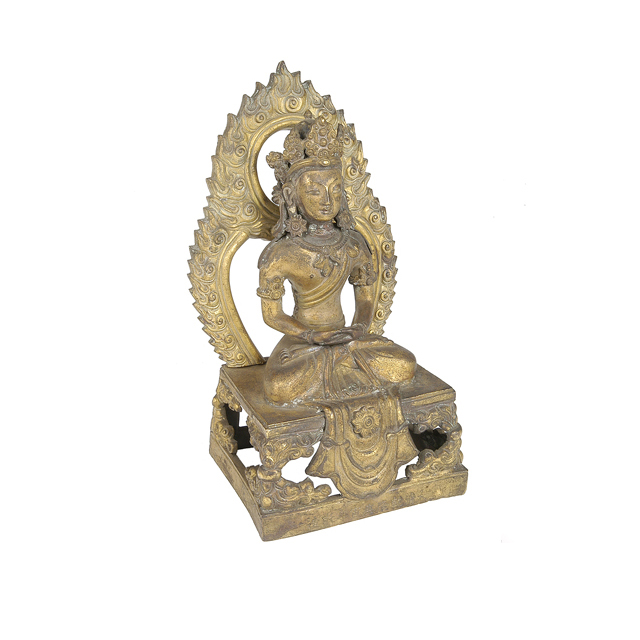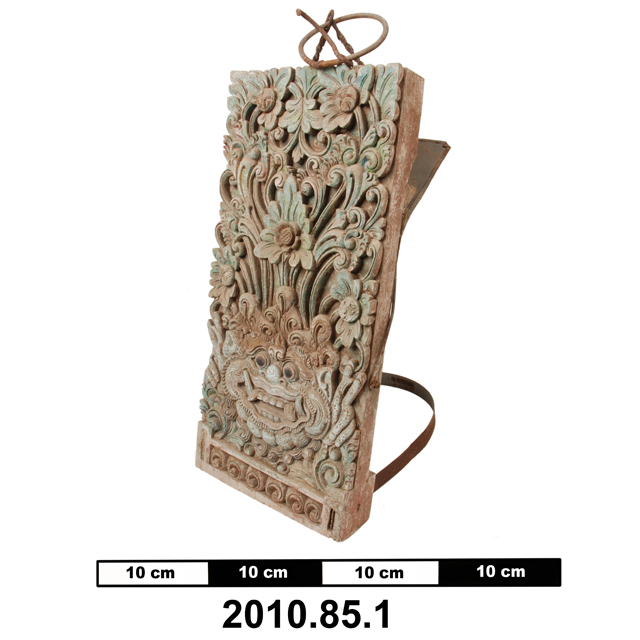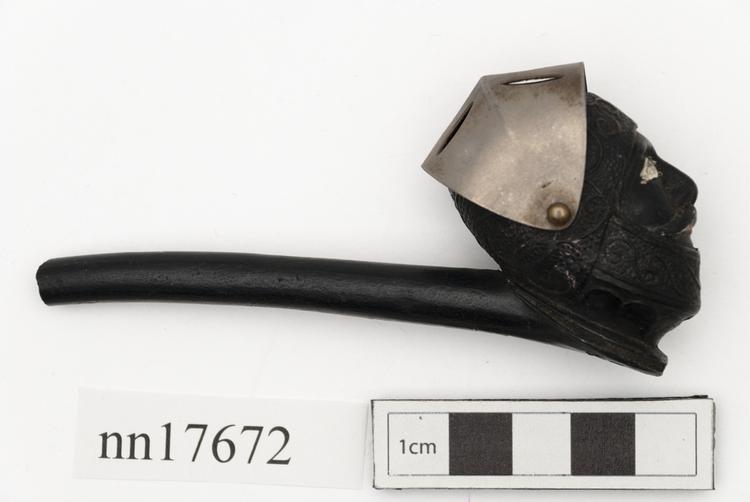
Gilt bronze figure of a seated Guanyin, Bodhisattva of compassion in the Sino-Tibetan style. The Bodhisattva is depicted seated in the gesture of meditation, dhyanamudra, with both legs folded, feet crossed and soles upwards, both hands folded on lap with palms facing upwards. The figure wears an elaborate crown and jewellery, a sash crossed over the naked torso with narrow waist, a skirt falling in pleats over a rectangular platform base with legs decorated with foliage scrolls. Behind the figure is a flaming mandorla. Inscription in Chinese characters dated to 1770 engraved at the front bottom of the base reads, 'Made in the gengyin year of the Kangxi period in the Great Qing dynasty'.
The donor, Dr Hildburgh, was born in New York in 1876 and died in 1956. He was a traveller and a collector of amulets, with interests in archaeology and medieval artefacts. According to an obituary in the journal 'Folklore', he recorded in his meticulous notebooks, dating from 1902, information gleaned from dealers as well as literary references and his own opinions. He was a generous benefactor to the Victoria and Albert Museum and the Folklore Society, of which he was a council member from 1909 and president for a period after the Second World War. An incomplete collection of off prints of his articles was presented by him to the Folklore Society's library in 1950 and listed in the journal 'Folklore' of that year. Dr Hildburgh donated a number of items to the Horniman Museum.


































































































































































































































































































































































































































































































































